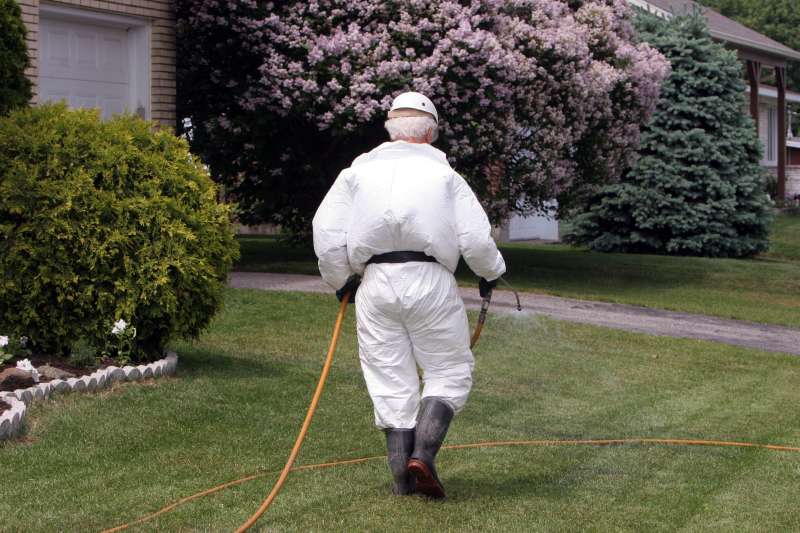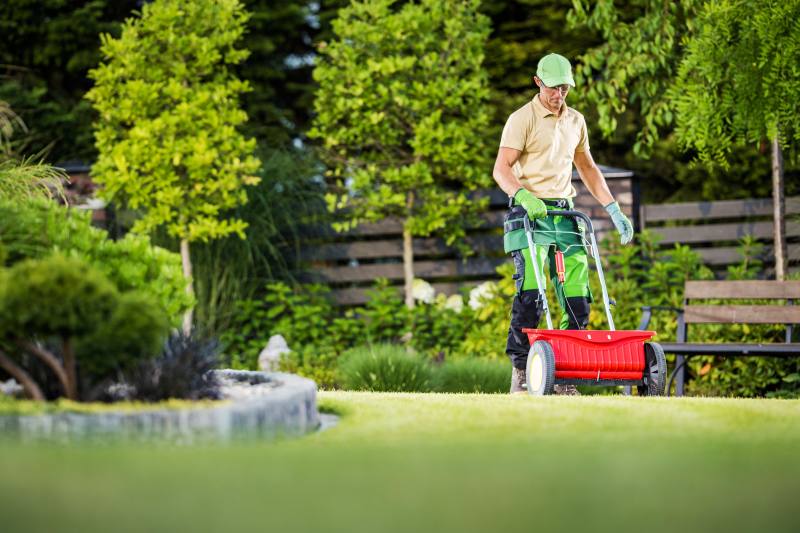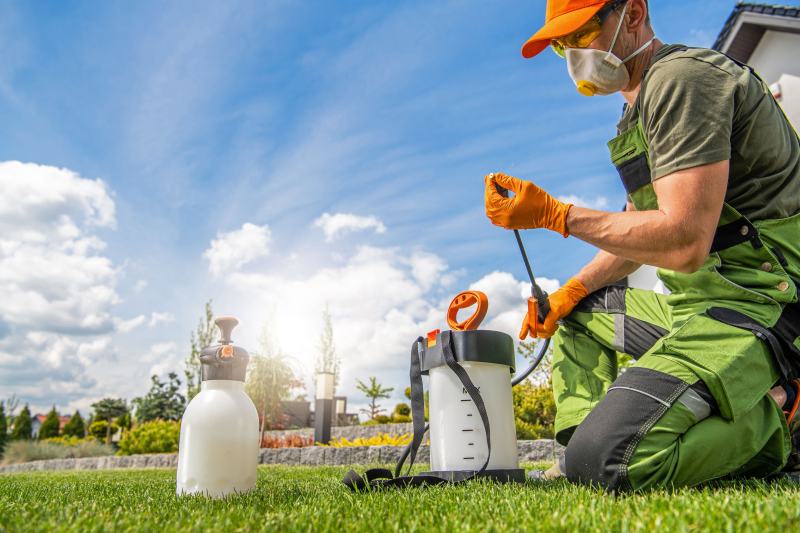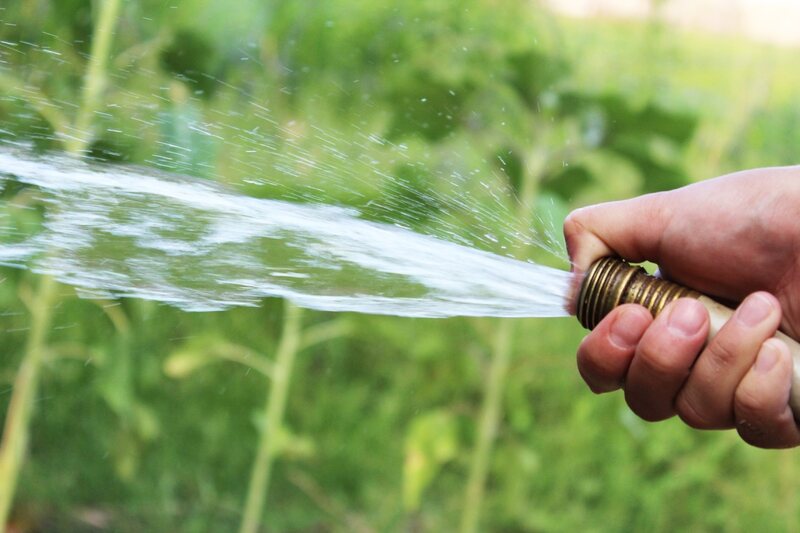How and When to Apply Pre-Emergent Herbicides
BY LASHONDA TUCKER | AUGUST 7TH, 2023 | BLOGThere’s nothing worse to a lawn fanatic than pouring time and effort into caring for your grass, only to find weeds popping out, ruining your lawn. After the money and effort you’ve put into maintaining your yard, no one would blame you for screaming at the top of your lungs at the sight of lawn weeds. Don’t worry. We get it, and we got you. This article explains how and when to apply pre-emergent herbicides to prevent weeds from ever sprouting in your lawn again.
In this article:
- When to Apply Pre-Emergent Herbicides
- How to Apply Pre-Emergent Herbicides
- What are Pre-Emergent Herbicides?
- How Do Pre-Emergent Herbicides Work?
- Types of Pre-Emergent Herbicides
- Pre-Emergents and Turfgrass
- Which Pre-Emergent Should I Buy?
- FAQ
When to Apply Pre-Emergent Herbicides
The timing of pre-emergent herbicide application is everything. Pre-emergents will not help you with pesky dandelions or foxtails that seem to be stalking you if they are already sprouting in your lawn. You must apply pre-emergent herbicides before the times of year when weed seeds begin to germinate.
Spring
Spring pre-emergent herbicide applications prevent summer annual weeds, like goosegrass and crabgrass. Apply when the soil temperature is about 55 degrees or higher for 48 hours or longer.
The month or time of the month you apply weed control will be determined by what part of the country you live in since climates and weather differ according to location. That’s why it’s better to sync your herbicide applications with the soil temperature rather than a specific date. You can find a soil thermometer online or at your local gardening supply store for less than $10.
Fall
Applying pre-emergent herbicide in the early fall prevents winter annual weeds, like common chickweed and annual bluegrass. Apply when the soil temperature falls to around 70 degrees for three days or more.
How to Apply Pre-Emergent Herbicides

Photo Credit: Bouillante / Canva Pro / License
Use the product as instructed on the package, including following the proper measurement amounts per area covered. It is also important that you protect yourself from these toxic chemicals.
Protective gear to wear when applying herbicides:
- Goggles
- Gloves
- Clothing and apparel that protect your head, face, and skin. Make sure as much of your body is covered as possible, like your arms and legs.
Once you’re protected, you can apply pre-emergent herbicides in one of two ways, depending on whether the product you purchased is granular or liquid.
How to Apply Granular Pre-Emergent Herbicide

Photo Credit: welcomia / Canva Pro / License
Granules are applied by hand or via a shaker bag or spreader. A spreader is best when covering a large area. A cup can be filled with granules and then shaken out from the cup onto the lawn, but this method can take a while.
Water the lawn after spreading granules so the herbicide can penetrate the soil, allowing the active ingredients to attack the weed seeds.
Tools needed:
- 1 seed/fertilizer spreader
Steps:
- Calibrate the spreader as per the instructions on the herbicide label.
- Pour the pre-emergent herbicide granules into the spreader following the manufacturer’s label regarding measurements and ratios.
- Walk the spreader across the lawn slowly in parallel, overlapping lines. Be sure to cover the yard as uniformly as possible to prevent weeds in every spot.
- Water the lawn immediately after applying the granules to help them soak into the soil.
How to Apply Liquid Pre-Emergent Herbicide

Photo Credit: welcomia / Canva Pro / License
Liquid pre-emergents come in ready-to-use or concentrated forms. If the liquid is in concentrated form, it requires mixing with water, and a sprayer is used for application. Ready-to-use pre-emergents don’t need mixing and typically come in a spray bottle or sprayer.
Tools needed:
- For concentrated formulas: 1 weed sprayer
- For ready-to-use formulas: Nothing except the herbicide itself
Steps:
- If you purchased a concentrated formula, mix the liquid with water, following the measurement and ratio directions from the label. Pour the mixture into your weed sprayer. If you purchased a full-strength formula, it will come ready to spray without mixing.
- Spray the herbicide onto your lawn, applying the spray row by row. Be sure to cover the area evenly.
- Water the lawn after spraying it. About one inch of water is needed for the chemicals to work. Water the area within three to five days.
What are Pre-Emergent Herbicides?
If you’ve been doing your homework and researching weed control solutions, you have come across both pre-emergent and post-emergent herbicides. Pre-emergent herbicides prevent seeds from germinating. They do not kill weed seeds that have already germinated or actively growing weeds.
On the other hand, post-emergent herbicides control weeds that have sprouted and are growing.
A few herbicides contain chemicals that perform as both a pre-emergent and post-emergent herbicide. Products with Dithiopyr are examples.
How Do Pre-Emergent Herbicides Work?

Photo Credit: PxHere
The active ingredients in pre-emergents are triggered when watered, which allows the chemicals to penetrate the soil. The chemicals form a barricade on the top of the soil which stops seeds from germinating. Depending on the chemicals in the product, they may stop the roots from growing, prevent seed cell division, or inhibit growth enzymes.
Types of Pre-Emergent Herbicides
It’s important to make sure you get the right type of pre-emergent herbicide for your specific weed problem. Otherwise, you might end up hurting your lawn, too, and not just the weeds. The two categories of pre-emergent herbicides are selective and nonselective.
Selective
Selective herbicides control specific weeds without adversely affecting other plants. Most pre-emergent herbicides used for home lawns fall into this category.
Nonselective
Nonselective herbicides kill all plants. Because of this, nonselective herbicides are used to spot-treat specific plants rather than being applied to the whole lawn or garden. Don’t apply nonselective herbicides around the same time you seed new grass, or they will prevent the grass from growing.
Pre-Emergents and Turfgrass
Pre-emergents should only be used on turfgrass that has been established for at least one year. Grass can be damaged if pre-emergents are applied too soon after reseeding or overseeding the lawn.
Some cool-season grasses that can be injured by pre-emergent applications after the grass has been seeded are tall fescue and ryegrass. Warm-season grasses adversely affected are Bermudagrass and centipedegrass.
Examples of grasses that can be damaged by pre-emergent herbicides after sodding or sprigging are the warm-season grasses St. Augustinegrass and Zoysiagrass.
Which Pre-Emergent Should I Buy?
Not all weed killers kill all weeds. So, knowing the type of weed that is growing is important. Make sure you are identifying the weed correctly. Some weed killers destroy broadleaf weeds like spurge, clover, and ragweed. Others are chemically formulated to control grassy weeds, like foxtail and barnyardgrass.
Also, knowing your grass type is important. As previously explained, certain weed killers are recommended for use on certain types of grass seed, while some come with a warning to never be used on specific grass types.
Some products are weed killers and fertilizers in one. But homeowners should only fertilize plants and lawns when they are growing actively. Therefore, using a weed and feed product may not be a good idea. Homeowners should never use a two-in-one herbicide on warm-season turfgrasses like Zoysiagrass and Bermudagrass.
Here are some examples of active ingredients in pre-emergent herbicides and what grass types or kinds of plants on which they can be used safely:
Atrazine:
- Weeds it works on: Broadleaf weeds
- Plants: Atrazine can damage trees, flowers, and ornamental shrubs.
- Grass: Safe for application on St. Augustinegrass or centipedegrass after green-up.
Benefin:
- Weeds it works on: Some broadleaf weeds, annual grasses
- Plants: Safe to use around flowers, trees, and ornamental shrubs.
- Grass: Safe for use on all common grass types.
Dithiopyr:
- Weeds it works on: Controls annual grasses and some broadleaf weeds
- Plants: Safe to use around flowers, trees, and ornamental shrubs
- Grass: Safe for all turfgrass types.
Indaziflam:
- Weeds it works on: Controls goosegrass, annual bluegrass, annual sedges, and broadleaf weeds.
- Plants: Prevents growth of a wide range of plants.
- Grass: Safe to use on warm-season grasses that are established and disease and stress-free. Do not use on cool-season grasses.
Prodiamine:
- Weeds it works on: Controls both broadleaf and grassy weeds, like annual bluegrass and crabgrass.
- Plants: Safe to use around established perennial plants.
- Grass: Can be used on most cool and warm-season grasses commonly used in home lawns.
FAQ About Pre-Emergent Herbicides
How soon after pre-emergent herbicide application can a lawn be reseeded?
Wait at least eight to 10 weeks after using weed killers to reseed your lawn, or the seeds can be killed by the weed control chemicals.
Are there any natural pre-emergent weed killers?
Corn gluten meal can be used on henbit in early spring to inhibit seed germination. If the seeds have already germinated, applying the meal can cause the weed to grow. Apply corn gluten meal when it is going to be dry for at least two days; roots in moist soil can absorb nutrients that activate weed growth. Monthly reapplications may be necessary.
Why do weeds appear?
Grass that is not properly maintained can result in weed growth. Lawns need to be mowed at the correct heights, fertilized regularly, and watered at the proper frequency to grow thick enough to crowd out weeds. Thin or bare turfgrass can promote weed growth.
In gardens, new weed seeds can be introduced by mowers used on grass that had weeds. However, most weeds in gardens are from seeds that developed in previous years in the garden. Weeds can also emerge when plants are spaced too far apart.
What are some ways to prevent weeds in gardens or flower beds?
Here are some things you can do to manage weeds:
- Use mulch, especially organic mulch, to prevent weeds from growing. Organic mulch reduces weed germination. Grass clippings treated with herbicides or pesticides should not be used in edible plant gardens.
- Pull up weeds before they flower and produce seeds. Be sure to remove the underground roots and tubers, too.
- Get rid of weeds routinely, before they grow into an infestation.
How can you prevent weeds in lawns?
Here are some proactive weed management tips:
- Use turfgrasses adapted to the environment.
- Apply fertilizer and water at appropriate intervals and in the correct amounts.
- Mow the lawn at the recommended height and time interval.
- Treat the lawn for insects and diseases.
- Dethatch as needed.
Is there a chemical that does not work on perennial weeds?
While dinitroanilines control some broadleaf weeds, they do not control perennials, like nutsedges, for example.
Are herbicides safe for pets?
Herbicides can contain chemicals that both attract and harm pets. Animals can be adversely affected by eating plants treated with herbicides and by inhaling the toxins from treated plants. Some tips to keep pets safe are:
- Read product labels to be aware of toxicity and symptoms of poisoning
- Keep pets away from the treated area as long as possible
- When not in use, store products out of the reach of pets
Final Thoughts
Being one step ahead of weeds is the only way to prevent them. If you know when weed seeds are germinating, you can apply pre-emergent herbicide to keep them from ever sprouting in your lawn. And if you prevent weeds, you’ll never have to pull them.
When it comes down to it, weed management can be a pain. You have to keep up with a regular schedule, and if you miss just one herbicide application, you could end up with a lawn full of weeds in no time. If you prefer to let someone else manage your lawn care, we can connect you with lawn care professionals in your area who can keep your lawn pristine and weed-free.